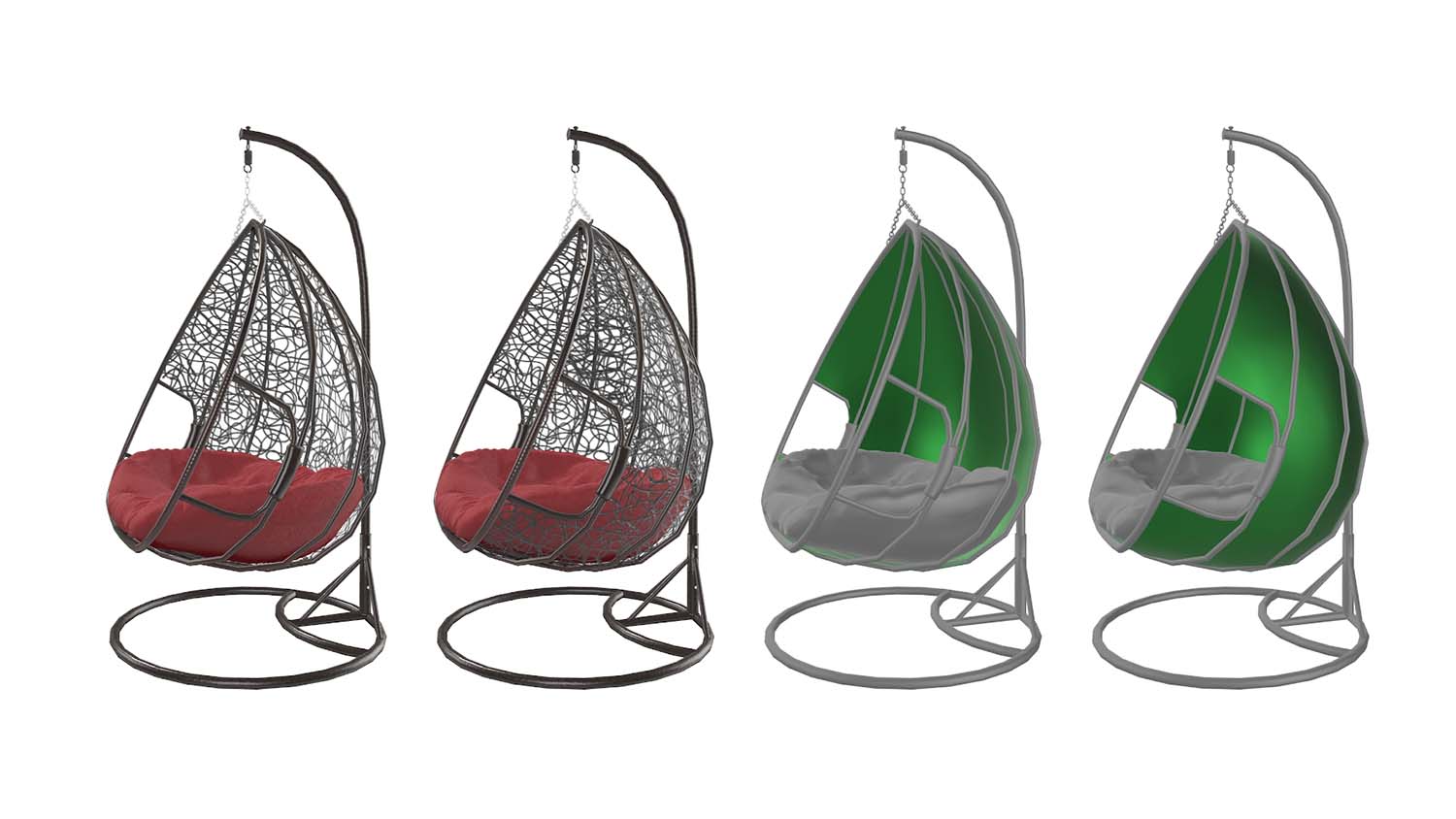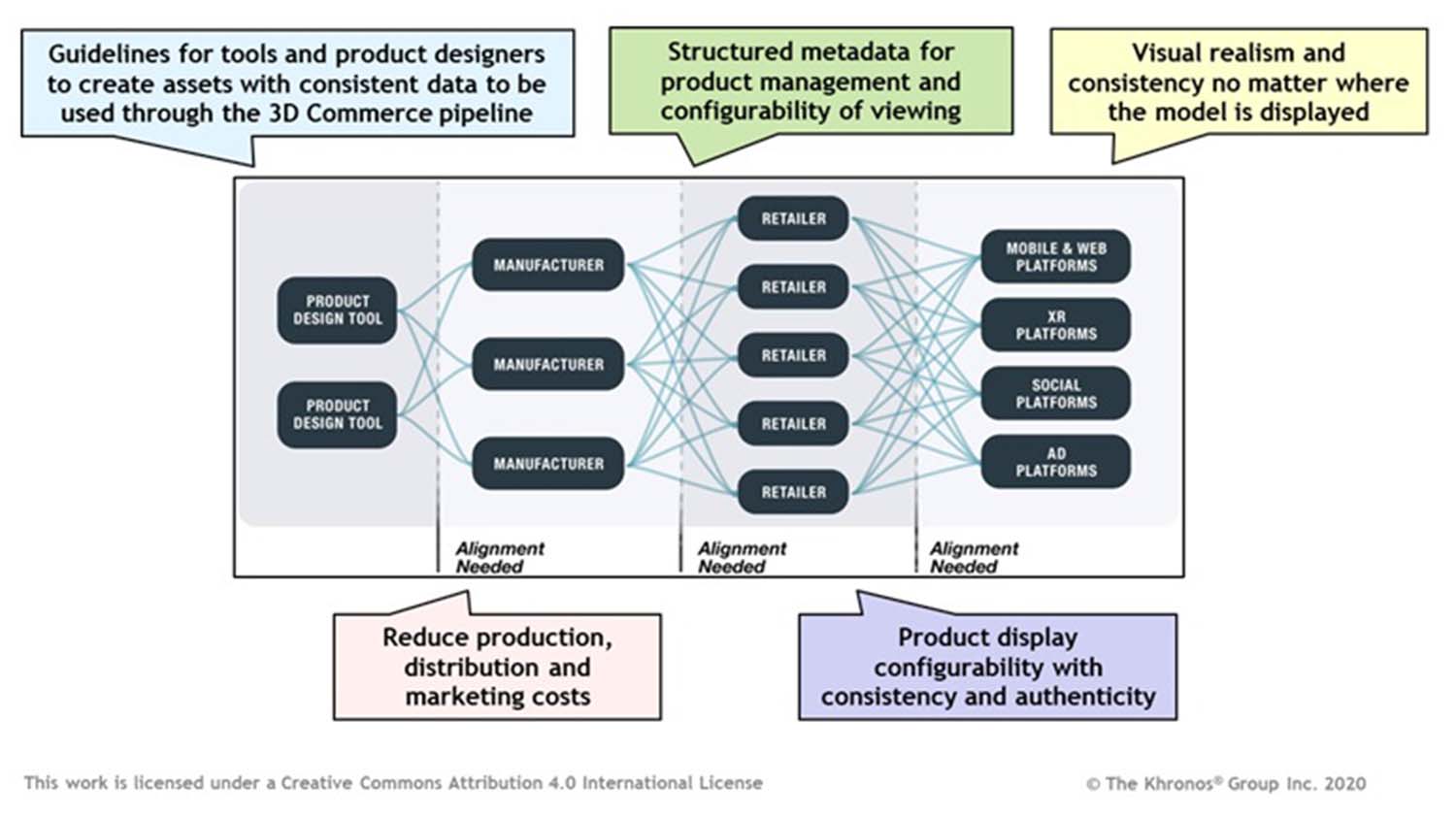A 3D Marketplace online has moved further to the fore as a holiday season under lockdown has shown the greater need to accelerate technology and standards. Here Max Limper explains how the Khronos Group is aiming to set standards for content creators to create web optimised 3D models
In late October, a consortium made up of more than 70 technology and retail companies released a set of guidelines that will power a revolution in the use of 3D content.
These pivotally important rules were set out by the Khronos 3D Commerce Working Group, which was set up on the premise that 3D is poised to become ‘pervasive in retail’.
Companies including Adobe, Google, Autodesk, IKEA, LG, Microsoft, Samsung and Wayfair are part of this endeavour, setting aside competition in order to build industry consensus on what standardisation activities are most urgently required for ubiquitous 3D marketplace for Commerce.
From this extraordinary collaboration, the Khronos Asset Creation Guidelines were born.

Lockdowns are obviously bad news for the High Street, which has been hit badly by reduced footfall in an era of social distancing. But it can be argued that the decline of physical stores is also bad news for consumers, who are unable to physically inspect and interact with the products they buy.
Digital 3D models offer many advantages over plain 2D images, allowing customers to view the product from many angles, including zoom in or out.
Demand for 3D artists is about to skyrocket as retailers rush to fill their websites with these assets, which are likely to drive increased sales and cut down on expensive returns.
The new Khronos guidelines focus on creating 3D assets which can be viewed on the web or mobile. They set out standards which allow real-time rendering on multiple delivery platforms and streamline the creation of high-quality, efficient 3D assets that can power augmented reality and virtual reality experiences, product configurators, and interactive web-based 3D marketing tools.
These best practices will enable artists to “efficiently author 3D assets and models that can be reliably deployed for real-time rendering on diverse end-user delivery platforms,” the Khronos Group said as it released the guidelines.

To understand why these new rules are important, I’d like to flash back in time to the very beginning of the modern internet. Back in 1992, the Joint Photographic Experts Group established a photographic standard which gave its name to a famous type of image file: the JPEG format.
JPEG was revolutionary because it allowed images to be compressed and then easily shared across all platforms.
Today, JPEG is the most popular digital picture format in the world and billions of these files are published or transmitted online every day. Crucially, it can be easily viewed on any platform, from creaky old desktop computers to the latest smartphones.
The Khronos Group’s guidelines fulfil a similar role to the rules which allowed JPEG to become ubiquitous, and will let 3D content be viewed on any platform.

“The guidelines are 3D tool-agnostic and can be used alongside any asset creation software,” wrote the Khronos Group. “They provide content creators with an easy-to-understand set of recommended practices and presets for publishing targets including desktop, mobile, and AR platforms. These recommendations will be actively maintained by the 3D Commerce Working Group so they stay up-to-date as 3D and XR technology evolves.”
These guidelines form a comprehensive set of standards governing file formats and asset structure, best practices for lighting in real-time 3D assets, optimisation of the rendering of materials for real-time asset delivery and many other aspects of building 3D assets.
They are likely to prove invaluable for retailers, content creators, tool developers or technology developers.
The guidelines will also help companies build scalable pipelines – a key challenge in 3D. If every retailer commissions 3D models of their products, it will lead to a huge surge in demand – and there are only a limited number of 3D artists in the world.
The best practices set out by Khronos will help to build scalable pipelines which can cope with the demand. They will also help to increase affordability and boost quality assurance.
To wrap-up, I believe that if you’re working in the design sector, you need to know about the guidelines – as well as the huge opportunity that’s about to open up as demand for 3D models goes through the roof.
At DGG we firmly believe in the importance of standardisation and streamlining processes across the industry. Only with efficient and reliable workflows, scalable 3D production is possible.
With RapidCompact we offer a fully automatic solution to convert large “offline” base assets to compact 3D models for presentation in real-time, be it in AR or on the Web.

Max Limper is CEO and co-founder of DGG (Darmstadt Graphics Group), a company that specialises in 3D optimisation and creates the RapidCompact platform.
Limper is one of the main contributors to the 3D Asset Creation Guidelines and co-chair of the Asset Creation TSG within the Khronos 3D Commerce working group.
RapidCompact by DGG allows content creators to create optimised 3D models adhering to the guidelines directly in the browser.






